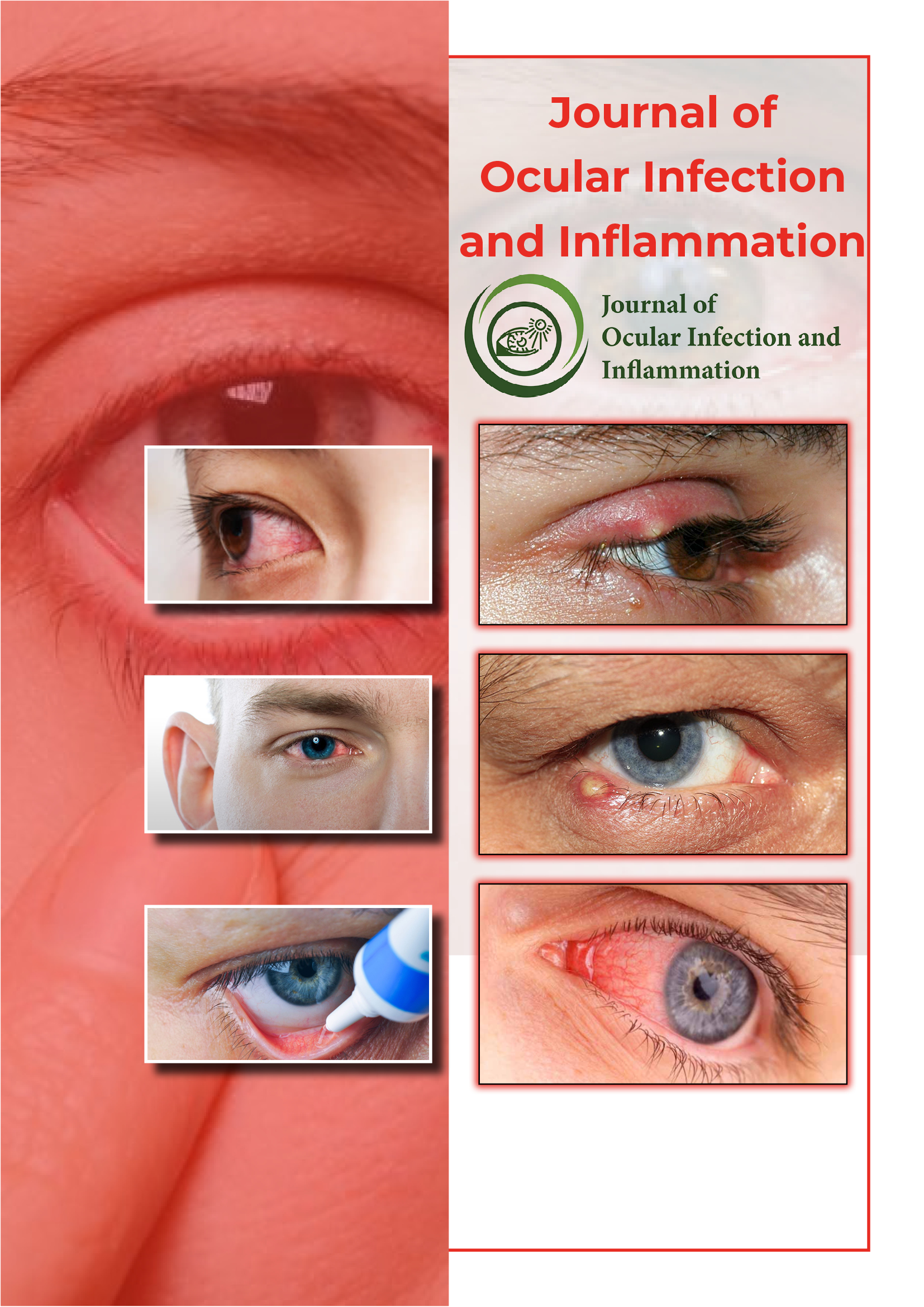Useful Links
Share This Page
Journal Flyer

Open Access Journals
- Agri and Aquaculture
- Biochemistry
- Bioinformatics & Systems Biology
- Business & Management
- Chemistry
- Clinical Sciences
- Engineering
- Food & Nutrition
- General Science
- Genetics & Molecular Biology
- Immunology & Microbiology
- Medical Sciences
- Neuroscience & Psychology
- Nursing & Health Care
- Pharmaceutical Sciences
Opinion Article - (2023) Volume 4, Issue 1
Symptoms as well as Therapies on Microbial Eye Inflamation
Fathy Mansour Omar*Received: 02-Jan-2023, Manuscript No. JOII-23-20972; Editor assigned: 04-Jan-2023, Pre QC No. JOII-23-20972 (PQ); Reviewed: 18-Jan-2023, QC No. JOII-23-20972; Revised: 25-Jan-2023, Manuscript No. JOII-23-20972 (R); Published: 01-Feb-2023, DOI: 10.35248/JOII.23.04.113
Description
The eyes are delicate organs that are susceptible to various infections, including fungal infections. Ocular fungal infections can affect any part of the eye, including the cornea, conjunctiva, eyelids, and intraocular tissues. These infections can be caused by various species of fungi, such as Aspergillus, Candida, Fusarium, and others. Understanding the causes and treatment of ocular fungal infections is essential for timely diagnosis and management to prevent potential vision loss.
Causes of ocular fungal infections
There are several risk factors that can increase the chances of developing ocular fungal infections. One of the primary risk factors is a weakened immune system, which can occur due to systemic diseases such as diabetes, or immunosuppressive medications. Other risk factors include trauma to the eye, prolonged use of contact lenses, ocular surgeries, chronic use of corticosteroids, and ocular surface diseases such as dry eye syndrome.
Fungi are ubiquitous in the environment, and ocular fungal infections can occur through various routes of entry. The most common mode of entry is through direct inoculation of fungal spores or hyphae into the eye due to trauma or surgery. Fungal spores can also be airborne and can reach the eye through inhalation or deposition on the ocular surface. Contact lens wearers are at increased risk of fungal infections due to prolonged lens wear, poor lens hygiene, and corneal trauma during lens insertion or removal. Additionally, pre-existing ocular surface diseases, such as dry eye syndrome, can disrupt the normal protective mechanisms of the ocular surface, making it more susceptible to fungal infections.
Treatment of ocular fungal infections
The management of ocular fungal infections requires early diagnosis and prompt treatment to prevent complications and minimize potential vision loss. The treatment approach depends on the severity and location of the infection, as well as the causative fungal species.
Topical antifungal medications: For mild to moderate cases of ocular fungal infections, topical antifungal medications are typically the first line of treatment. These medications include natamycin, amphotericin B, voriconazole, and fluconazole. These antifungal medications work by inhibiting the growth of the fungus and preventing its ability to reproduce. They are usually administered as eye drops or ointments and may need to be used frequently throughout the day for several weeks or even months.
Systemic antifungal medications: In severe cases of ocular fungal infections or when the infection has spread to the deeper layers of the eye, systemic antifungal medications may be prescribed in addition to topical medications. These medications are taken orally and are effective in treating systemic fungal infections. Examples of systemic antifungal medications include fluconazole, itraconazole, and amphotericin B. However, systemic antifungal medications may have more potential side effects and require close monitoring by a healthcare professional.
Surgical intervention: In some cases, surgical intervention may be necessary for the management of ocular fungal infections. For example, if the infection involves the cornea and does not respond to medical treatment, a corneal transplant may be required to remove the infected tissue and restore vision. In severe cases, where the intraocular tissues are involved, vitrectomy, which is the removal of the vitreous gel inside the eye, may be performed to clear the infection.
Adjunctive therapies: In addition to antifungal medications and surgical intervention, adjunctive therapies may be used in the management of ocular fungal infections. These include supportive measures such as lubricating eye drops, bandage contact lenses, and protective eyewear to prevent further injury to the eye.
Citation: Omar FM (2023) ymptoms as well as Therapies on Microbial Eye Infection. J Ocul Infec Inflamm. 04:113.
Copyright: © 2023 Omar FM. This is an open-access article distributed under the terms of the Creative Commons Attribution License, which permits unrestricted use, distribution, and reproduction in any medium, provided the original author and source are credited.

